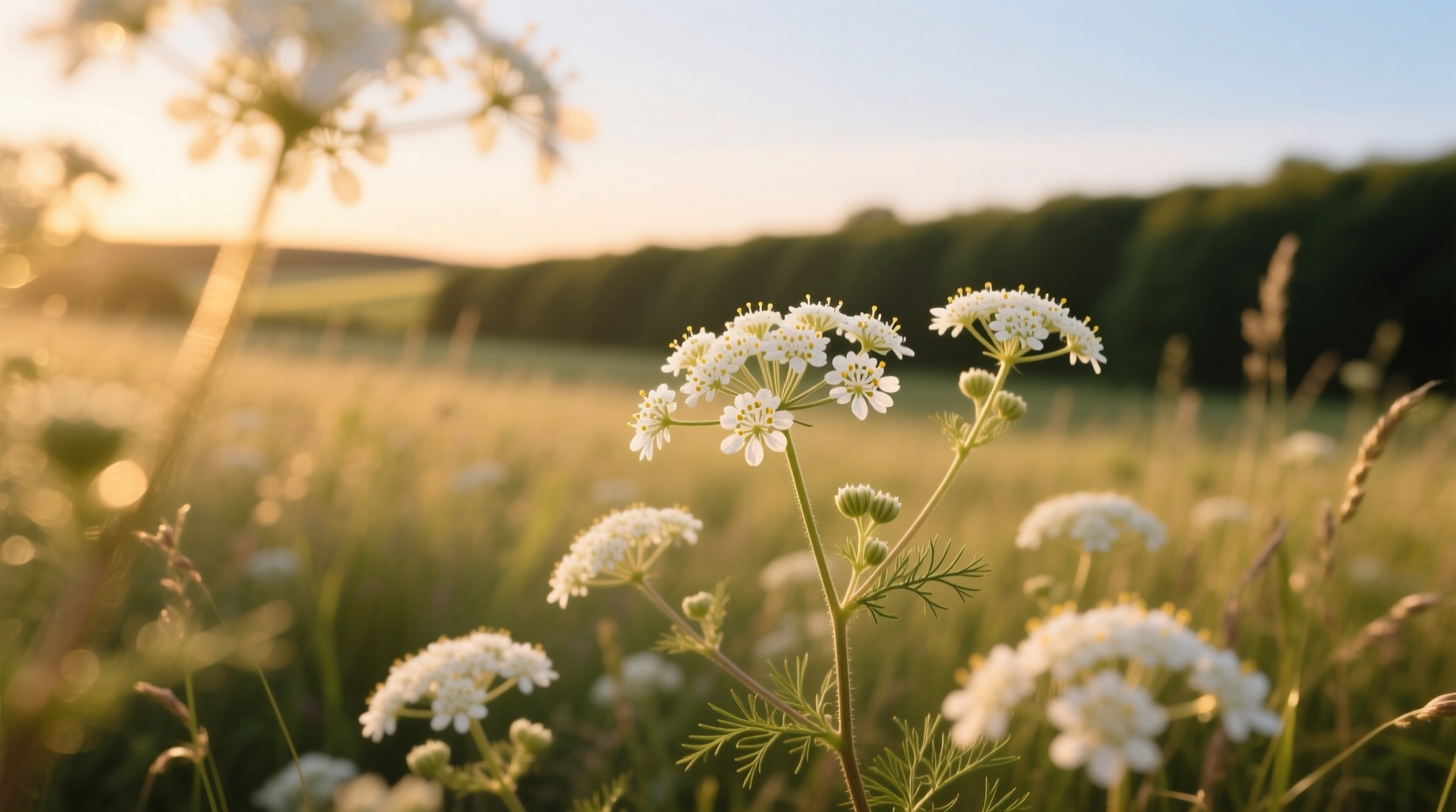Why Proper Identification Matters: Your Safety First
Every spring, foragers face a critical challenge: distinguishing edible cow parsley from its deadly relatives in the Apiaceae family. While cow parsley itself poses no toxicity risk, misidentification can be fatal. The key difference lies in the stem structure—cow parsley has smooth, hollow, green stems, while poison hemlock (Conium maculatum) features distinctive purple blotches and a solid stem. This single characteristic could save your life.
| Identification Feature | Cow Parsley (Anthriscus sylvestris) | Poison Hemlock (Conium maculatum) |
|---|---|---|
| Stem | Smooth, hollow, green without markings | Solid with distinctive purple spots/blotches |
| Smell | Mild parsley-anise aroma | Strong, unpleasant "mousy" odor |
| Flowers | Loose, lacy umbels (2-6 inches across) | Tighter, more symmetrical umbels (1.5-4 inches) |
| Height | 2-4 feet tall | 3-10 feet tall |
This comparison table reflects verified botanical characteristics documented by the Royal Botanic Gardens, Kew, providing reliable field identification criteria that foragers can trust.
Where and When to Find Cow Parsley
Cow parsley thrives in partial shade along woodland edges, hedgerows, and roadside verges throughout temperate regions of Europe and North America. Its peak season runs from April through June, with the most tender, flavorful growth appearing in early spring before flowering.
Understanding context boundaries is crucial for safe foraging. The USDA Plants Database confirms cow parsley's non-toxic nature, but emphasizes that proper identification must precede consumption. Never harvest near roadsides (pollution risk) or areas treated with herbicides. The safest practice is to collect only plants you can positively identify using multiple characteristics—not just one feature.

Edible Uses and Culinary Applications
When correctly identified, cow parsley offers versatile culinary potential. The young leaves and shoots provide a delicate flavor profile blending mild parsley with subtle anise notes. Foragers traditionally use it as:
- Raw addition to spring salads (youngest leaves only)
- Flavorful herb butter or pesto base
- Seasoning for soups, stews, and egg dishes
- Edible flower garnish for desserts and beverages
Unlike cultivated parsley, cow parsley's flavor diminishes significantly after flowering, so timing your harvest is essential for optimal taste. The roots, while technically edible, require extensive preparation and are generally not recommended for novice foragers.
Ecological Importance and Historical Context
Beyond human consumption, cow parsley plays a vital ecological role. Its early spring blooms provide essential nectar for pollinators emerging from winter dormancy. Historically, European foragers valued it as a seasonal food source during lean spring months before modern agriculture provided year-round produce availability.
Unlike many wild edibles that have medicinal properties, cow parsley's primary value lies in its culinary application. The National Center for Biotechnology Information confirms no significant medicinal compounds in Anthriscus sylvestris, distinguishing it from related plants with therapeutic applications.
Responsible Foraging Practices
Sustainable harvesting ensures this resource remains available for future generations. When gathering cow parsley:
- Take only what you'll use (never more than 20% of a patch)
- Use sharp scissors to avoid damaging plant crowns
- Leave flowering plants to support pollinator populations
- Always obtain landowner permission before foraging
Remember that regulations regarding wild plant harvesting vary by location. Check local foraging laws through your state or provincial natural resources department before collecting.
Common Misconceptions Clarified
Several persistent myths surround cow parsley. First, it's not the same as Queen Anne's lace (wild carrot), which has a hairy stem and distinctive dark central flower. Second, while related to parsley, it's not merely "wild parsley" but a distinct species with its own characteristics. Finally, contrary to some online claims, cow parsley doesn't possess significant medicinal properties—it's primarily a culinary herb.











 浙公网安备
33010002000092号
浙公网安备
33010002000092号 浙B2-20120091-4
浙B2-20120091-4